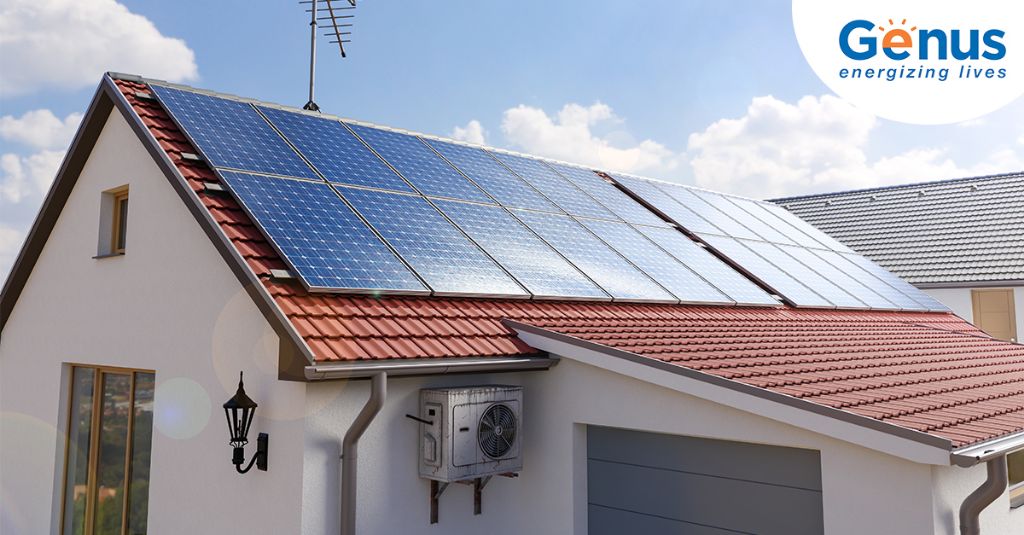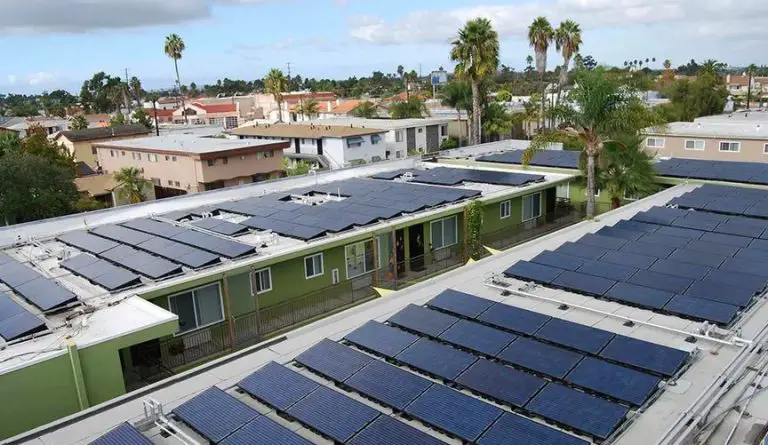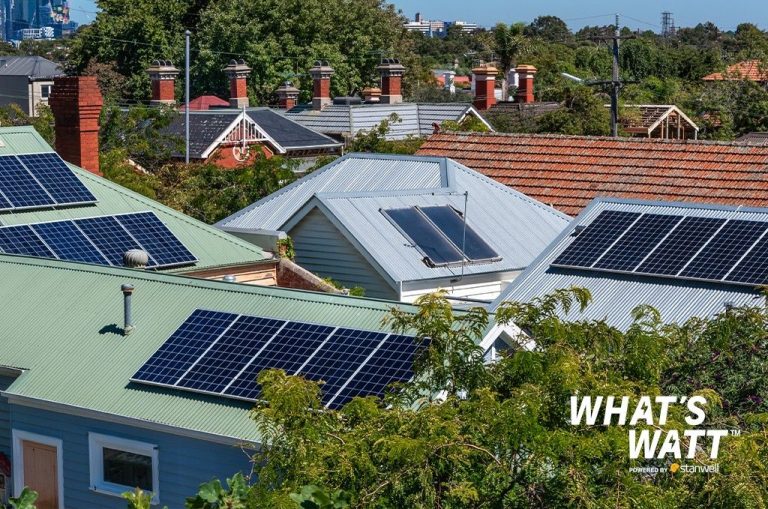Is Solar Energy Same As Light Energy?
Many people use the terms “solar energy” and “light energy” interchangeably, assuming they refer to the same thing. However, while related, these two forms of energy are distinct in key ways. Understanding the difference is important for discussing renewable energy sources knowledgeably.
In this article, we will unpack the precise definitions of solar and light energy, analyze how they are connected, and explain why they are not equivalent. With clear explanations and real-world examples, you’ll gain a nuanced appreciation of these two energetic phenomena that power life on Earth.
Definitions of Solar and Light Energy
Solar energy is the radiant energy emitted by the sun. It is produced through nuclear fusion reactions that take place at the sun’s core, where hydrogen atoms fuse into helium releasing enormous amounts of energy. This energy radiates outwards from the sun in the form of electromagnetic radiation, including visible light, infrared, ultraviolet and radio waves.
Light energy, also referred to as visible light or optical radiation, is the visible spectrum of electromagnetic radiation that is visible to the human eye. It is the part of the electromagnetic spectrum that the human visual system is sensitive to, with wavelengths ranging from approximately 380 to 700 nanometers. Common sources of light energy include the sun, light bulbs, LEDs, candles, and fire.
The key difference between solar and light energy is that solar energy encompasses the full spectrum of the sun’s radiation, while light energy refers only to the visible portion of the electromagnetic spectrum. So all light energy is solar energy, but only a small fraction of solar energy is light. Solar energy is a broader term that includes visible light, as well as ultraviolet, infrared, and other types of radiation emitted by the sun.
The Electromagnetic Spectrum
The electromagnetic spectrum is the range of frequencies or wavelengths of electromagnetic radiation. It encompasses everything from radio waves to gamma rays. Visible light that humans can see is just a small part of the full electromagnetic spectrum. The different types of electromagnetic radiation are categorized according to their wavelength and frequency. From longest to shortest wavelength (or lowest to highest frequency), the spectrum consists of radio waves, microwaves, infrared, visible light, ultraviolet, x-rays and gamma rays.
Visible light wavelengths range from about 380 nanometers (violet) to about 740 nanometers (red). This range sits between infrared light and ultraviolet light on the electromagnetic spectrum. Solar radiation, or sunlight, contains a broad spectrum of wavelengths including ultraviolet, visible light, and infrared. The peak emission of solar radiation aligns closely with the human eye’s sensitivity to light and perception of “white” light.
The Process of Photosynthesis
Photosynthesis is the process by which plants, algae and some bacteria convert sunlight into chemical energy that can be used for fuel. During photosynthesis, plants absorb light energy from the sun through chloroplasts in their leaves. The chlorophyll in chloroplasts captures different wavelengths of light and uses that energy to convert carbon dioxide and water into oxygen and energy-rich carbohydrates like glucose.
The overall chemical reaction for photosynthesis is:
6CO2 + 6H2O + sunlight energy → C6H12O6 + 6O2
This process converts light energy into stored chemical energy that plants can use. The carbohydrates produced are used by the plant as building blocks and fuel. The oxygen is released as waste and makes the atmosphere breathable for many living organisms.
So in summary, photosynthesis converts sunlight into chemical energy that plants can utilize. This is different than how solar panels work, which convert sunlight directly into electrical energy.
How Solar Panels Work
Solar photovoltaic (PV) panels generate electricity directly from sunlight through a process called the photovoltaic effect. Solar panels consist of solar cells, which contain special materials called semiconductors such as silicon. When sunlight hits these solar cells, the photons from the sunlight excite and energize the electrons in the semiconductors, causing them to break free and flow as electricity. This flow of electric current happens in one direction across the solar cells, allowing the current to be captured and utilized. The more sunlight that hits the solar panels, the more electricity is generated from the excited electrons. Solar cells are assembled together in modules and arrays to produce higher voltages and currents to meet electricity needs. While the photovoltaic effect allows solar panels to absorb sunlight and generate an electric current, they cannot store energy over long periods. Therefore, additional battery storage is often used in conjunction with solar panels.
Comparing Light and Solar Energy
While light energy and solar energy are closely related, they have some key differences. Light energy refers to electromagnetic waves in the visible light spectrum. This includes the colors we see like red, orange, yellow, green, blue, indigo and violet. Solar energy is the radiant energy emitted by the sun in the form of electromagnetic waves across the entire electromagnetic spectrum, including ultraviolet, visible light, and infrared wavelengths.
Solar energy encompasses the full spectrum of the sun’s radiation. Only a small portion of solar energy is in the visible light spectrum that our eyes can see. The other wavelengths like ultraviolet and infrared are invisible to the human eye, but they all contribute to the sun’s total radiant energy output.
Light is just one component of the broader solar energy emitted by the sun. So while light energy is part of solar energy, solar energy includes both visible light as well as the invisible wavelengths like ultraviolet and infrared.
Practical Applications
Both light and solar energy have numerous practical applications that improve our lives and society.

Examples of light energy applications include:
- Light bulbs to illuminate homes, offices, streets, etc.
- Fiber optic telecommunications that allow high-speed internet and phone service.
- Lasers used in surgery, manufacturing, barcode scanners, printers, and entertainment like laser shows.
- UV lamps to disinfect hospital equipment and sterilize water supplies.
Examples of solar energy applications include:
- Solar panels that convert sunlight into electricity for homes, businesses, and the utility grid.
- Solar water heaters that harness the sun’s thermal energy for residential and commercial hot water needs.
- Concentrated solar power plants that use mirrors to focus sunlight and generate electricity on a large scale.
- Solar ovens and cookers that use sunlight as a clean cooking fuel, especially in developing regions.
As you can see, both light and solar energy have become integral parts of modern life, improving health, connectivity, efficiency, and sustainability across many sectors.
Environmental Benefits of Solar Energy
Solar energy offers significant environmental benefits compared to fossil fuel sources like coal, oil, and natural gas. When sunlight is converted into electricity, it produces no air or water pollution and very little greenhouse gas emissions. According to the EPA, the use of solar power in 2018 avoided the release of over 45 million metric tons of carbon dioxide in the United States alone. That’s equivalent to taking 9.8 million cars off the road for a year.
In contrast, burning fossil fuels like coal and natural gas releases pollutants like nitrogen oxides, sulfur dioxide, particulate matter, and heavy metals that contribute to smog, acid rain, and respiratory illness. Fossil fuels also emit large quantities of carbon dioxide into the atmosphere, the primary driver of global climate change. By generating electricity from the sun rather than combusting fossil fuels, solar energy curtails these emissions and supports cleaner air and water quality.
Widespread adoption of solar power around the world is a key strategy for reducing greenhouse gas emissions and mitigating global warming. Solar panels placed on homes, businesses, and large-scale solar farms can generate carbon-free renewable electricity. In many regions, solar power is now competitive with or even cheaper than electricity from fossil fuels. As the costs of solar technology fall, adoption rises, supporting the transition to a low-carbon economy powered by clean energy.
Limitations of Solar
Solar energy does have some limitations that need to be considered. The most significant is intermittency – solar energy can only be captured when the sun is shining. This means solar power output varies throughout the day and seasonally. Energy storage solutions are needed to store solar energy for use at night or on cloudy days. Currently battery storage is expensive and limited. Global solar energy penetration is still low, accounting for only about 3% of total electricity generation worldwide as of 2020. Most grids are not designed to handle more than 10-20% solar power, so major infrastructure and grid management changes will be needed for higher solar adoption. Regional solar resources also vary – sunnier parts of the world like the desert southwest United States, Middle East, and Australia have greater solar potential than cloudier regions. Overall the variability and limited penetration of solar demonstrate it cannot currently fully replace conventional power sources and complements rather than competes with other renewables like wind and hydropower. However as storage technology improves and infrastructure adapts, solar power’s role is likely to continue increasing worldwide.
Conclusion
Solar energy and light energy are, in fact, directly related but not one and the same. Light energy from the sun fuels solar energy technologies like solar panels to generate electricity. Through the process of photosynthesis, plants also utilize light energy to convert carbon dioxide and water into chemical energy. While sunlight and solar energy share a close connection, they operate differently at the atomic level.
Solar power clearly has enormous potential as an abundant, renewable energy source. With further advances in solar technology and battery storage, solar could one day power our homes, businesses, and transportation systems with clean, green energy from the sun.







